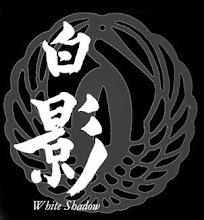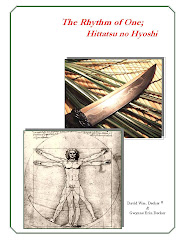
In the bottom knife, a Matt Lamey Bootlegger, we see a very different style handle which is more suited to the thumb-pinky finger grip. These handles are much broader near the pommel. The thumb-pinky method works best for broad, circular movements, ie chopping and cuts. In my opinion the thumb-pinky style also provides a slightly more secure grip, less likely to be knocked from your hand. This is good for a less confident fighter or one with a weak grip.

Which style do I prefer? This really is a personal preference and each student has to decide for themselves. Due to my past training I prefer the handle style of the top knife, thumb-forefinger. How can you determine which one best suits your hand or your style? The cheapest way would be to make one of each out of aluminum and wood. These could be used later for training purposes and will not cost you a lot of money. This is a much cheaper method than buying live blades with different style handles. (But who am I to talk?) I would suggest making these “trainers” with over-sized handles and slowly working them down with a rasp and sandpaper until they perfectly fill your hand and your style. Once you have accomplished this you could find a custom maker and send off your knife to him as a pattern. This is assuming you can find a custom maker who will build a knife to your design. If nothing else, ask him to match the handle size and configuration of your trainer. As a note of warning, I have had to remind one of my favorite makers a couple times when his handles started getting too big for my hands. How important is the handle? While, the blade is the part that does the deadly deeds, the handle is where the human operator interfaces. A properly fitting knife will feel almost weightless, a poorly fitting one, like a club.






2 comments:
Very interesting, Dave! This is something I hadn't thought much about when examining the ergonomics of a knife. I think for me, I would do better with something like the Bowie there. The added leverage and grip work well with my style of use.
The difference is something that people often adjust to without conscious thought. One other point which I hinted ta but failed to pin down is that the thumb fore-finger grip enhances point, or thrusting. styles whereas the second method works best with heavy cutting-chopping styles. The "birdshead" style handles also work best for chopping, ie machete, goloks, pangas etc. Thanks for following my blog.
Post a Comment